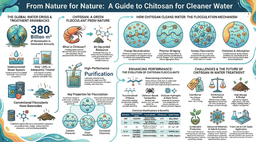Navigating the Highs and Lows of a Clinical Trial as a Research Coordinator
Published in Biomedical Research and Anatomy & Physiology
When you read a published research paper, it’s easy to focus on the final results—the carefully analyzed data, structured conclusions, and polished discussions. But what often goes untold is the journey behind the study—the late-night troubleshooting, the recruitment hurdles, the unexpected obstacles, and the moments of breakthrough.
As a clinical research coordinator, I had the privilege of working behind the scenes on our recently published study, Differences in Natriuretic Peptide Response in Self-Identified White and Black Individuals: A Physiological Clinical Trial, led by Dr. Pankaj Arora. Natriuretic Peptides (NPs) are protective hormones of the heart, known for their significant cardiometabolic benefits. Our research aimed to answer an important question: Do individuals of different racial backgrounds exhibit differences in the NP response to physiological perturbations such as exercise and beta-blocker therapy?
But getting to that answer was far from straightforward. This is the story of what it really took to complete this study—from setbacks to successes.
A Trial Interrupted: COVID-19 and the Halt to Research
When this NIH-funded study began in April 2019, everything was on track. We had a carefully designed protocol, a recruitment strategy in place, and a strong multidisciplinary team.
Then came December 2019. Within months, the COVID-19 pandemic shut down nearly all research activities. Because our study focused on physiological responses rather than clinical efficacy, we were not considered a priority for reopening, leaving us in limbo for months.
This was one of the most challenging phases of the trial. We had to pause recruitment, rethink how to engage participants and find ways to restart a project that had lost momentum.
Rebuilding Recruitment: Lessons in Adaptability
Once research activities resumed, we quickly realized that recruitment would be far more challenging than before. Finding young, healthy individuals for a physiological study was already a challenge, and post-pandemic hesitancy only made it tougher.
One of the biggest hurdles was ensuring balanced representation across both groups. To address this, we:
- Partnered with colleges and universities to engage students in research.
- Launched targeted social media campaigns to increase awareness and interest.
- Collaborated with trusted community leaders to build trust and encourage participation.
- Offered flexible scheduling and transportation assistance to remove logistical barriers.
It was a slow process, but persistence paid off—we successfully completed enrollment despite significant delays.
A Physiologically Rigorous Trial: The Precision Behind the Data
This was a carefully controlled physiological trial requiring strict adherence to protocol. As research coordinators, our job was to ensure that every detail was executed flawlessly.
- Salt-Standardized Diets: Before each intervention, participants followed a controlled diet to eliminate sodium intake as a confounding factor. Coordinating meal pickups and ensuring compliance was no small task!
- Tailored Exercise Protocol: Each participant performed a standardized 20-minute aerobic exercise session at 70% of their VO2 max, requiring individual assessments and real-time adjustments to maintain consistency.
- Metoprolol Therapy Monitoring: Participants underwent six weeks of metoprolol therapy, with regular ECGs, blood pressure monitoring, and medication adherence tracking. Ensuring retention and compliance over this extended period required constant follow-ups.
Every step had to be precise to ensure valid comparisons across groups.
Key Findings: What We Discovered
- Exercise increased NP levels in both groups, but the NT-proBNP increase was significantly higher in white participants (+23%) compared to Black participants (+11%).
- Metoprolol therapy increased NP levels across all subtypes, with NT-proBNP rising by 97%, BNP by 59%, and MR-proANP by 17%, with no significant racial differences in response.
- Despite prior evidence of lower baseline NP levels in Black individuals, their NP system showed similar responsiveness to pharmacological intervention (metoprolol) but a blunted response to exercise.
These findings suggest that exercise and beta-blockers influence NP biology differently across races, with potential implications for cardiovascular risk stratification and treatment strategies. Understanding NP responsiveness could provide insights into racial differences in hypertension, heart failure, and cardiometabolic diseases.
Reflections: The Human Side of Clinical Research
While our study provides important scientific insights, what stands out to me the most is the people behind the research—participants, coordinators, and the broader research team.
- Recruitment required persistence and creativity. Some days felt like an uphill battle, but seeing participants commit to the study made every effort worthwhile.
- Protocol adherence was key. Ensuring that every participant followed the strict diet, medication regimen, and exercise protocol required continuous engagement and troubleshooting.
- Participant retention relied on relationship-building. Many participants stayed in the study because they felt heard and supported. Small efforts—flexible scheduling, clear communication, and genuine engagement—made a huge difference.
As research coordinators, we often operate behind the scenes, ensuring everything runs smoothly. But our work is just as critical as the data itself—it’s what turns an idea into published science.
Lessons for Future Trials
- Anticipate the unexpected. No one could have predicted a pandemic, but being flexible and having strong participant engagement strategies made all the difference.
- Invest in community partnerships. Trusted networks are key to recruiting a broad range of participants. Collaborating with colleges, universities, local organizations, and community leaders enhanced our reach.
- Prioritize the participant experience. A trial is only as strong as its participants’ willingness to complete it. Making their journey smoother ensures long-term success.
A Note of Gratitude
This trial would not have been possible without:
- The dedication of our participants, who committed their time and effort to a rigorous study.
- The expertise of our research team, led by Dr. Pankaj Arora and Dr. Garima Arora, who navigated every challenge with resilience.
- The support of the UAB Center for Clinical and Translational Science (CCTS), whose infrastructure made this trial possible.
Clinical trials are more than just data points—they are stories of perseverance, collaboration, and discovery.
I hope this research sparks further exploration into the complex interplay of cardiovascular physiology and inspires the next generation of research teams to continue pushing the boundaries of precision medicine.
Follow the Topic
-
Nature Communications

An open access, multidisciplinary journal dedicated to publishing high-quality research in all areas of the biological, health, physical, chemical and Earth sciences.
Your space to connect: The Nitric oxide signalling in cardiovascular health and disease Hub
A new Communities’ space to connect, collaborate, and explore research on Cardiovascular Physiology, Clinical Medicine, and Diseases!
Continue reading announcementRelated Collections
With Collections, you can get published faster and increase your visibility.
Women's Health
Publishing Model: Hybrid
Deadline: Ongoing
Advances in neurodegenerative diseases
Publishing Model: Hybrid
Deadline: Dec 24, 2025




Please sign in or register for FREE
If you are a registered user on Research Communities by Springer Nature, please sign in